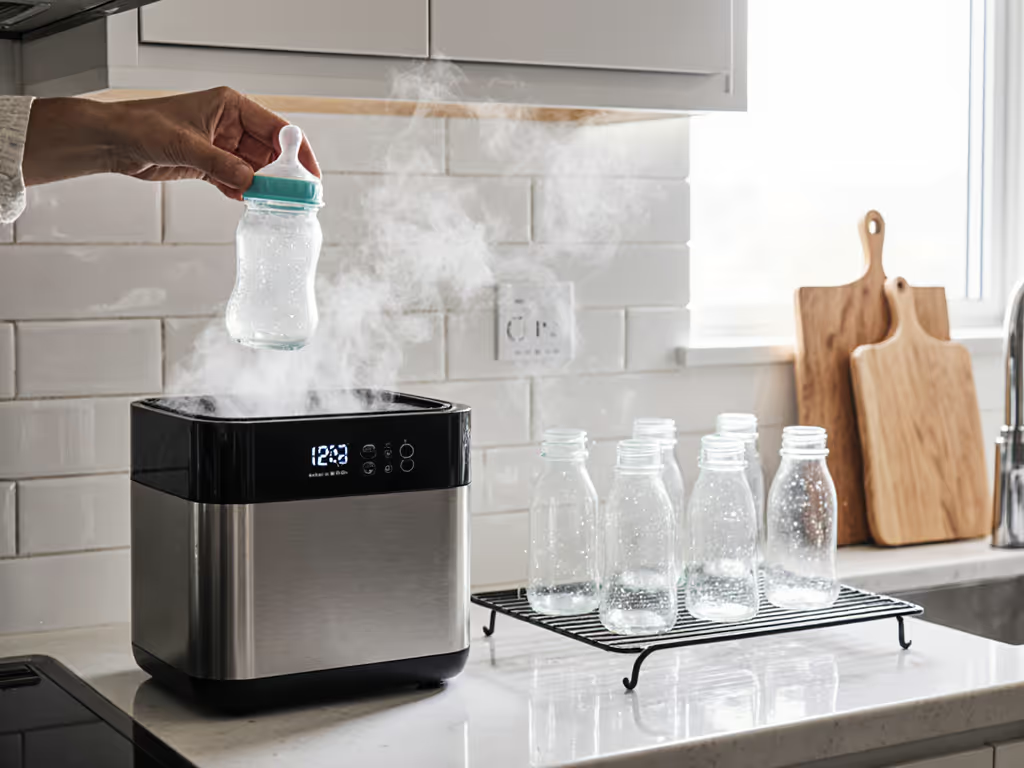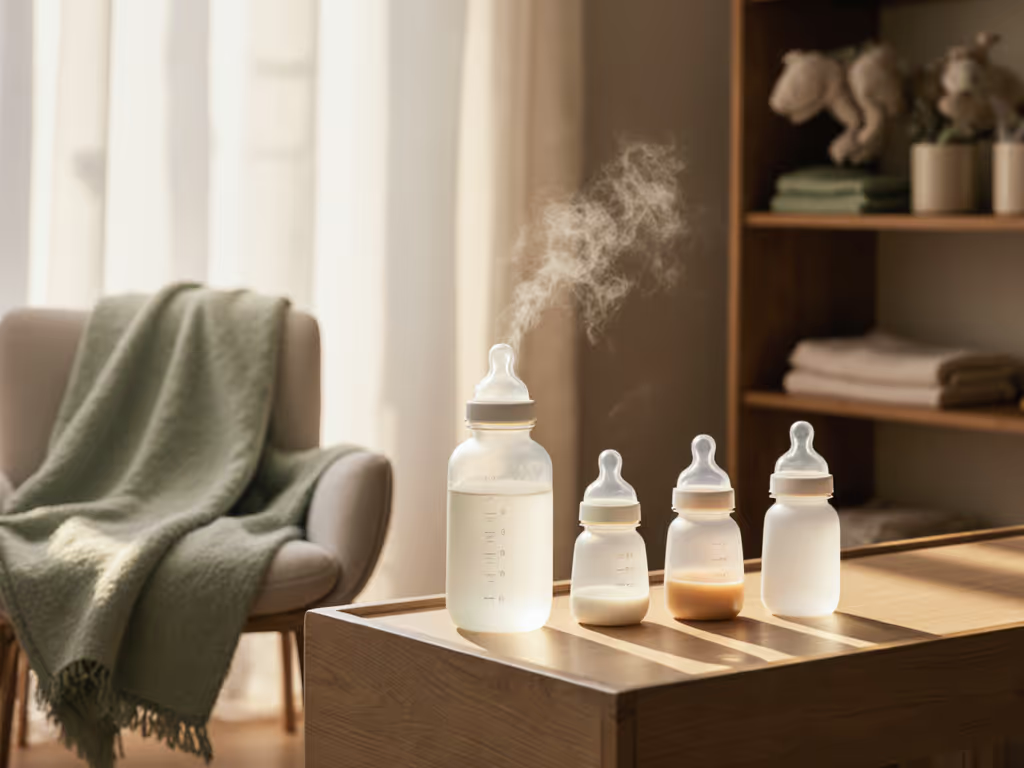
Baby Bottle Anatomy: Why It Matters for Smooth Feeds
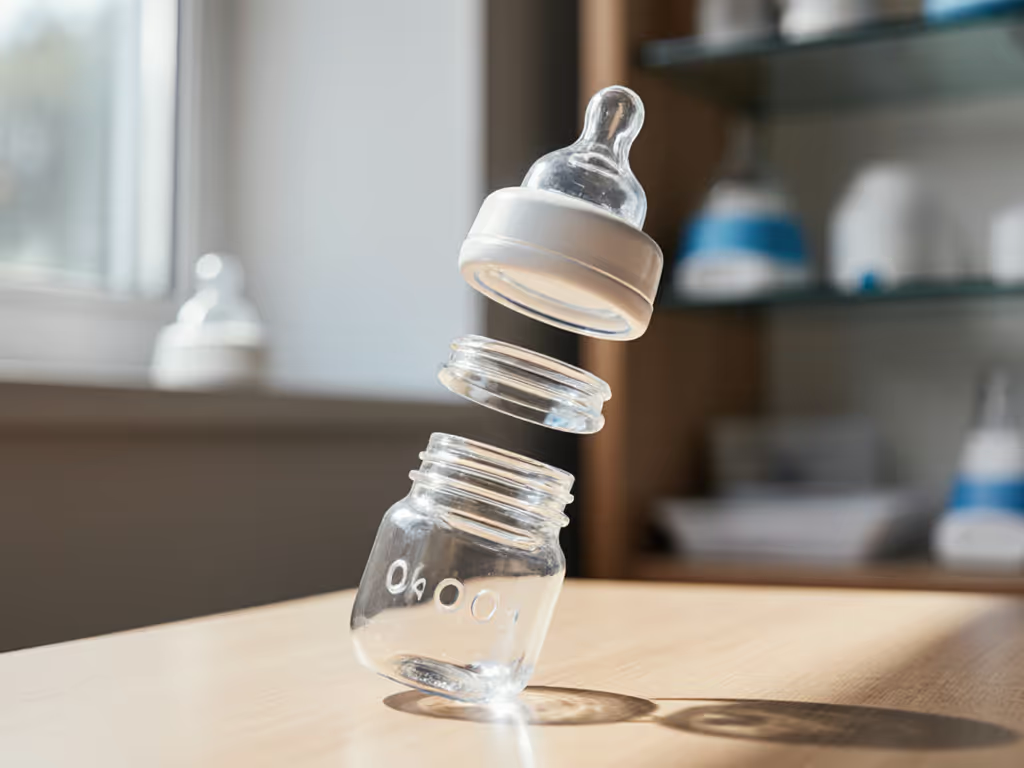
Understanding baby bottle anatomy transforms how you approach feeding challenges, not by chasing the latest "best baby bottles" marketing claims, but by observing how each component interfaces with your baby's natural feeding rhythm. When I assess a struggling feed, I don't start with the brand name; I examine how the bottle's structure supports (or disrupts) comfortable latch angles, milk flow pacing, and ergonomic handling for tired caregivers. This analytical approach reveals why two babies might reject or accept the same bottle design based on subtle anatomical factors you can actually observe.
Anatomy Affects Acceptance: An FAQ Deep Dive
What are the essential bottle components that impact feeding mechanics?
Most parents assume all bottles share interchangeable parts, yet bottle components function as an integrated system where each element affects the whole feeding experience:
- Bottle body/reservoir: The container shape influences grip comfort and milk pooling. Cylindrical bodies maintain consistent flow as liquid levels drop, while angled designs may create air pockets that disrupt vacuum balance.
- Nipple base: This wider section mimics the maternal areola diameter. When the base fits within your baby's natural latch circumference (typically 1.2 to 1.8 inches for newborns), lips seal comfortably without tugging.
- Median zone: The nipple's midsection contacts the tongue during sucking. Thickness here determines how much the baby must compress the teat, thinner walls require less oral strength but risk collapse in vigorous feeders.
- Nipple tip: Flow rate depends less on "level 1/slow" labels than on the hole geometry. Round holes provide continuous flow (ideal for weak suckers), while Y-cuts release milk only with active suction (better for controlling fast flows).
- Venting system: Not merely "anti-colic" window dressing, this regulates air exchange. Poorly designed vents create negative pressure that makes babies work harder to extract milk, leading to fatigue or bottle refusal.
Watch the baby, not the box. A $40 specialty bottle fails if the nipple geometry doesn't match your infant's oral anatomy, while a basic design succeeds when components align with observed feeding cues.
How does nipple design function beyond marketing labels?
Nipple design function involves three often-overlooked mechanical relationships:
-
Lip seal compatibility: The nipple base width must allow full lip coverage without stretching. If your baby's lips pull tightly across the base (creating white lines), the teat is too wide. If lips don't reach the base ridge, it's too narrow, both disrupt vacuum balance.
-
Tongue accommodation: The median zone must contour to your baby's tongue shape. A flat spot on the teat's underside indicates the tongue is compressing unevenly, a sign of mismatched geometry.
-
Flow initiation force: Measured in lab settings as the suction pressure (in mmHg) needed to start milk flow. Most "newborn" nipples range from 30 to 60 mmHg, but individual babies vary widely. Your sleepy newborn might need 25 mmHg while your vigorous 2-month-old requires 70+ mmHg to avoid gulping.
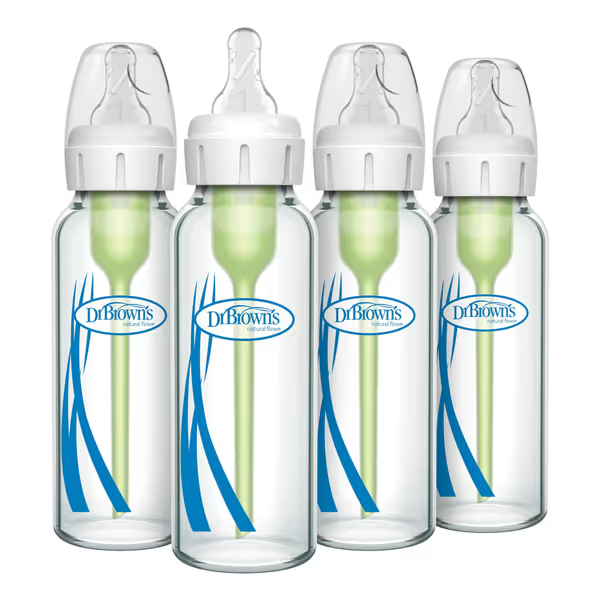
Dr. Brown's Options+ Narrow Glass Baby Bottle
What observable cues indicate a bottle anatomy mismatch?
Rather than guessing "why won't baby take the bottle," track these feeding mechanics indicators during feeds:
- Jaw tension: Rapid, shallow jaw movements (more than 2x per second) suggest flow is too fast, while prolonged sucking without swallowing indicates flow is too slow.
- Lip blanching: White lines at the lip corners signal the nipple base is too wide, forcing lips to stretch beyond comfortable range.
- Nipple collapse: If the teat caves in during sucking, the flow rate can't keep up with your baby's demand. This is often misdiagnosed as "weak suction" when it's actually a venting or hole-size issue.
- Hand tension: Clenched fists during feeding often correlate with flow frustration, while relaxed hands indicate comfortable pacing.
How can I test compatibility without buying multiple bottles?
Implement structured single-change experiments using gear you already own:
-
The tilt test: Feed vertically (bottle parallel to floor) versus slightly angled (45 degrees). If your baby gulps less at 45 degrees, the venting system likely needs adjustment, vertical positioning often compensates for poor airflow design.
-
The compression test: Gently squeeze the nipple mid-section during feeding. If milk flow improves noticeably, the hole geometry may be mismatched to your baby's suction strength.
-
The latch angle assessment: Position baby so their nose aligns with the nipple's top edge. If they consistently pull off when the bottle is held this way, the latch angle may force unnatural jaw positioning.
Matching Anatomy to Real-World Feeding Challenges
Addressing common pain points through component analysis
When parents describe "bottle refusal before daycare," I examine how bottle parts explained in product manuals often overlook ergonomic realities:
-
Daycare transport leaks: Most occur because caps don't create a secondary seal around the venting system. Check if liquid pools between the nipple collar and bottle rim (a sign the vent disk isn't seated correctly).
-
Inconsistent flow labels: "Level 1" varies by 300% across brands. Instead of trusting packaging, time how many sucks occur between swallows. Ideal pacing shows 10 to 15 sucks per swallow; faster suggests flow too slow, slower indicates flow too fast.
-
Nipple confusion fears: Not caused by bottle use itself, but by mismatched latch angles. A teat requiring 30 degrees more jaw opening than breastfeeding creates oral fatigue, making babies resist the bottle not due to "confusion" but physical discomfort.
I recall observing two infants in the same daycare room accepting identical bottles differently, one needed widened latch angles to relax jaw tension, while the other required faster flow pacing. This reinforced my core understanding: comfort cues predict acceptance far more reliably than any label.
Practical component adjustments for smoother feeds
Rather than replacing entire bottles, try these targeted fixes:
-
For gas/reflux issues: If burping doesn't resolve discomfort, test whether vent placement aligns with the milk-air interface. In Dr. Brown's bottles, the internal vent must sit above liquid level; tilting beyond 45 degrees floods the system.
-
For nighttime flow inconsistency: Warm bottles create steam that expands air pockets. Before feeding, gently squeeze the reservoir to release trapped air, this maintains consistent flow without altering nipple geometry.
-
For daycare compatibility: Label bottles with your baby's preferred tilt angle (e.g., "Hold at 30°"). Caregivers unfamiliar with specialty parts can still honor your infant's anatomical needs with this simple visual cue.
Your Actionable Next Step: The 3-Minute Observation Protocol
Before purchasing new bottles or troubleshooting flow issues, conduct this evidence-based assessment during your next feeding:
-
Track lip positioning: Note if lips cover 75% of the nipple base (ideal) or stretch beyond it (too wide).
-
Count sucks-to-swallows: Time 30 seconds of active feeding. Divide total sucks by swallows. You want a 10 to 15:1 ratio.
-
Check hand relaxation: Observe if fists unclench within 30 seconds of latching (indicates comfort).
This protocol identifies which bottle components need adjustment (not through guesswork, but by reading your baby's physiological responses). When caregivers shift focus from "best bottles" to baby bottle anatomy compatibility, acceptance rates improve without trial-and-error purchases.
Comfort first, then compatibility; calmer feeds shape better habits. Your next feeding session holds the answers, just watch the baby, not the box.
Related Articles

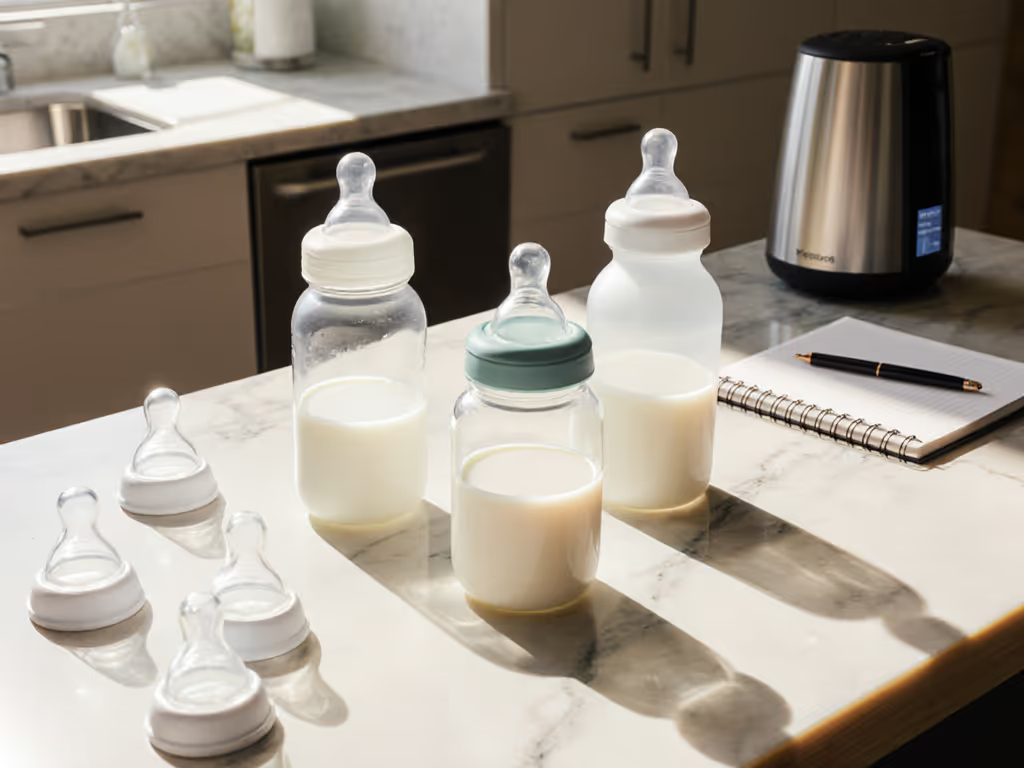
Baby Bottle Material Safety: Glass Plastic Silicone Compared
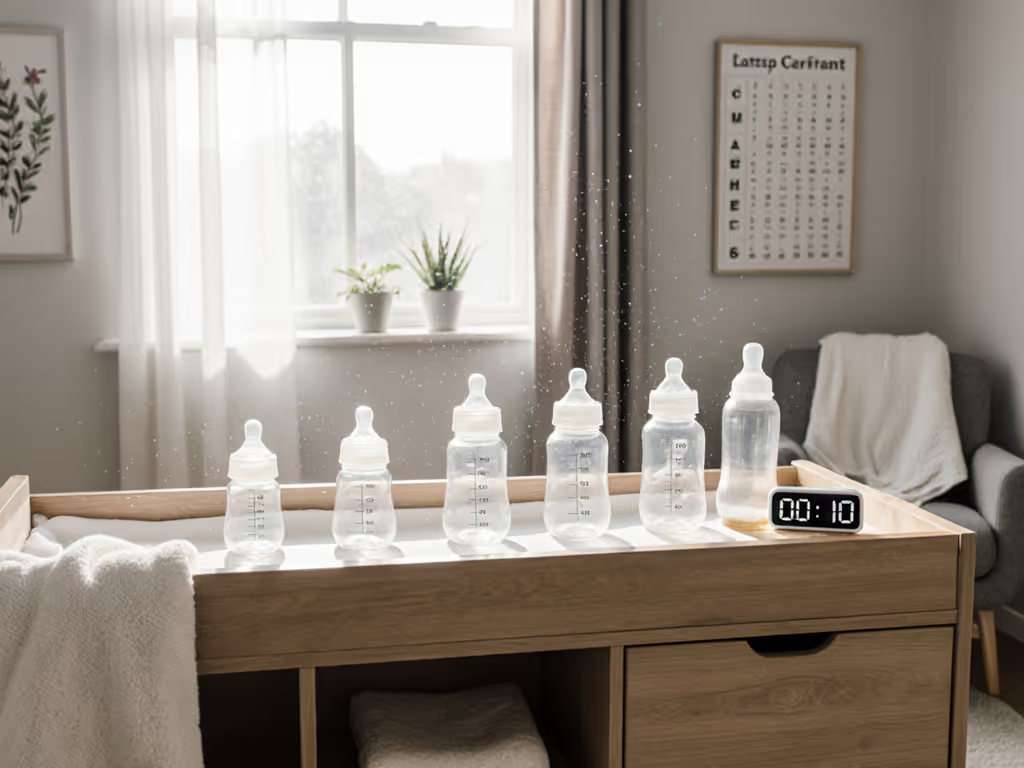
Baby Bottle Stages: Your Step-by-Step Transition Guide

Baby Bottle Flow Rates: Lab-Tested Truth vs Labels
